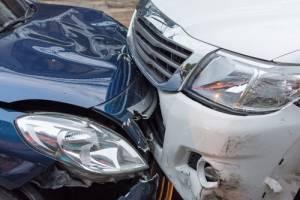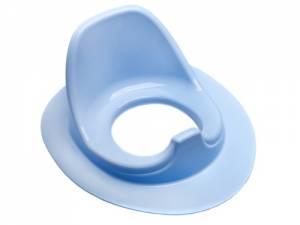Recent Blog Posts
Drowsy Driving More Deadly Than We Ever Thought
 By now you have probably heard one of the many public service announcements reminding drivers to keep their hands off of their cell phone while driving. Ever since cellular telephones exploded in popularity, there have been car accidents caused by people talking or texting on their phones. Texting while driving is a highly-reported issue, but you should know that there is another cause of dangerous distracted driving. Drowsiness, or simply being sleepy, is also a factor in many distracted driving accidents.
By now you have probably heard one of the many public service announcements reminding drivers to keep their hands off of their cell phone while driving. Ever since cellular telephones exploded in popularity, there have been car accidents caused by people talking or texting on their phones. Texting while driving is a highly-reported issue, but you should know that there is another cause of dangerous distracted driving. Drowsiness, or simply being sleepy, is also a factor in many distracted driving accidents.
New Research Shows Sleepy Drivers Are Prevalent
A recent study released by the AAA Foundation for Traffic Safety found that the rate at which motor vehicle accidents happen is much higher than previously estimated. While government statistics indicate that only about 1 to 2 percent of all car accidents involve a drowsy driver, AAA’s research shows that the actual rate of drowsiness-caused car accidents is about ten times that. Behind-the-wheel sleepiness was found to be a factor in almost 11 percent of all car accidents which resulted in injury, significant property damage, and/or airbag deployment.
What to Do If You Have Been in a Car Accident Caused by Falling Truck Cargo
 If you are like most people, you probably get slightly nervous driving behind an eighteen-wheel truck carrying cargo. Although it is rare, cargo and debris falling off the back of a truck is extremely dangerous. Motorists who run over cargo can spin out of control and crash, often causing other cars to be involved in the accident as well. Other times, cargo can fly out and hit the windshield or body of a vehicle, damaging it. Trucks can become unbalanced when cargo shifts inside the vehicle and topple over. In the most tragic cases, some motorists are severely injured or even die in accidents caused by shifting cargo.
If you are like most people, you probably get slightly nervous driving behind an eighteen-wheel truck carrying cargo. Although it is rare, cargo and debris falling off the back of a truck is extremely dangerous. Motorists who run over cargo can spin out of control and crash, often causing other cars to be involved in the accident as well. Other times, cargo can fly out and hit the windshield or body of a vehicle, damaging it. Trucks can become unbalanced when cargo shifts inside the vehicle and topple over. In the most tragic cases, some motorists are severely injured or even die in accidents caused by shifting cargo.
Federal Law Mandates That Trucks Have Cargo Properly Secured
The Federal Motor Carrier Safety Administration is the agency which regulates the U.S. trucking industry. In 2004, the agency updated it rules regarding the transportation and securing of cargo in order to reduce the number of accidents caused by cargo shifting or falling from commercial motor vehicles. Cargo must be firmly secured by structures of sufficient strength such as wedges and tiedowns. Additionally, inflatable bags or other materials should be used to fill space between pieces of cargo and the walls of the truck so that cargo cannot move around during transportation. Trucking companies who fail to take appropriate securing measures can be held liable for accidents caused by shifting cargo.
Common Causes of Car Accidents
 Getting into a car accident can have devastating consequences for those in the vehicles affected. Astoundingly, almost 1.3 million people die each year in car accidents and an additional 20-50 million are injured or disabled. Whenever a person gets into a vehicle, they are taking a risk. Drivers can lessen the risk that they will get into an accident by never driving after consuming drugs or alcohol, avoiding distractions like cell phones, and keeping a lookout for careless drivers. There are many things that can trigger a car accident, but you may be surprised as to the main causes of such accidents.
Getting into a car accident can have devastating consequences for those in the vehicles affected. Astoundingly, almost 1.3 million people die each year in car accidents and an additional 20-50 million are injured or disabled. Whenever a person gets into a vehicle, they are taking a risk. Drivers can lessen the risk that they will get into an accident by never driving after consuming drugs or alcohol, avoiding distractions like cell phones, and keeping a lookout for careless drivers. There are many things that can trigger a car accident, but you may be surprised as to the main causes of such accidents.
Distracted Driving
Distracted driving has become a more serious problem every year. Having the world at our fingertips on a cell phone has made it more tempting than ever to take your eyes off of the road. The National Safety Council reports that 1.6 million crashes each year are caused by distracted drivers. In fact, distracted driving is so dangerous that 1 out of 4 of all car accidents are caused by it.
Family Sues Target Over Potty Trainer Injury
 Retail product manufacturers and distributors have the responsibility to ensure that their products are safe and reliable. Unfortunately, defective or otherwise dangerous products do still reach consumers. When a company learns that a product that they manufacture or sell is defective, they have the responsibility to fix the problem and warn customers who have already purchased the product. Often this is done through a product recall. Recalls, however, are usually prompted by reports of injuries caused by the products in question.
Retail product manufacturers and distributors have the responsibility to ensure that their products are safe and reliable. Unfortunately, defective or otherwise dangerous products do still reach consumers. When a company learns that a product that they manufacture or sell is defective, they have the responsibility to fix the problem and warn customers who have already purchased the product. Often this is done through a product recall. Recalls, however, are usually prompted by reports of injuries caused by the products in question.
Major Retailer Faces Lawsuit
Target has come under scrutiny after serious injuries were allegedly caused by a product sold by the retail giant. A family from Riverside, California has filed a lawsuit against Target regarding a potty trainer that they purchased there that severely injured their 3-year-old son. The young boy’s parents and grandparents claim that the boy was nearly dismembered. According to the family, the boy’s genitals became stuck in the polypropylene weePOD Basix potty trainer causing severe lacerations. The boy’s parents rushed him to the emergency room, and the lasting effects of the injury are unknown.
Car Accident Injuries Are Not Always Obvious Right Away
 The moments after a car accident can be frightening and overwhelming. Even as the vehicles are coming to a stop, many people have a variety of thoughts racing through their heads, all at the same time. Is everyone okay? Is anyone injured? Am I hurt?
The moments after a car accident can be frightening and overwhelming. Even as the vehicles are coming to a stop, many people have a variety of thoughts racing through their heads, all at the same time. Is everyone okay? Is anyone injured? Am I hurt?
While you are taking stock of your situation following a crash, you should, of course, check yourself for injuries, keeping in mind that injuries are not always immediately apparent. Car accident victims may suffer whiplash, damage to soft tissue, concussions, spinal injuries, broken bones, and other serious injuries that may not become obvious for several hours or even days after the accident. Many of those who are involved in a car accident are quick to conclude that they are not injured, but these assumptions can be dangerous.
Fight or Flight Hormones Mask Pain
It is estimated that as many as 50 million Americans are injured in car accidents each year, many of whom did not immediately realize that they were hurt. This can sometimes be caused by a hormone called adrenaline. Adrenaline—also called epinephrine—floods a person’s bloodstream following a car accident or other distressing event. The “fight or flight” hormone raises the person’s heart rate, increases blood pressure, expands the air passages of the lungs, increases the production of sweat, and dilates the pupils to help prepare the individual to face the hazardous circumstances being presented.
Avoid Traffic Accidents This Holiday Season
 This is a busy time of year for many of us. Whether celebrating Kwanza, Hanukkah, or Christmas, millions of Americans will be traveling by car this holiday season, putting you and your family at an increased risk of getting into a car accident. The National Safety Council estimates that there were about 300 traffic fatalities last year and 37,000 injuries due to traffic accidents during the days surrounding Christmas of 2016. Every time that a person gets into a vehicle, they are taking a risk, but there are steps you can take in order to mitigate that risk.
This is a busy time of year for many of us. Whether celebrating Kwanza, Hanukkah, or Christmas, millions of Americans will be traveling by car this holiday season, putting you and your family at an increased risk of getting into a car accident. The National Safety Council estimates that there were about 300 traffic fatalities last year and 37,000 injuries due to traffic accidents during the days surrounding Christmas of 2016. Every time that a person gets into a vehicle, they are taking a risk, but there are steps you can take in order to mitigate that risk.
Experts encourage drivers to make sure that their car is properly maintained. If you are going to drive a long distance this holiday season, it is a good idea to take the car to a service station to be inspected. Check the tires for correct air pressure and ensure that the tires still have adequate tread depth. Top off all the fluids in the car and replace old or worn out wiper blades. Ensure that the car’s battery is working correctly. It is also a good idea to be prepared with an emergency car kit. In it, place extra phone chargers, blankets, flashlights, batteries, flares, reflective markers, water, snacks, and tools. Check your route and be aware of increased traffic patterns and accidents due to the holiday rush.
Young Men Are More Likely to Drive Distracted
 According to the National Highway Transportation Safety Administration, distracted driving behaviors such as reading a text, making a call, or simply changing the radio station while driving causes at least 12 percent of car accidents worldwide and 14 percent of U.S accidents. A recent study published in Frontiers in Psychology has shed even more light on the subject. Ole Johansson, a researcher at Norway's Institute of Transport Economics, led the study that sought to identify which demographic of people was most likely to engage in dangerous distracted driving.
According to the National Highway Transportation Safety Administration, distracted driving behaviors such as reading a text, making a call, or simply changing the radio station while driving causes at least 12 percent of car accidents worldwide and 14 percent of U.S accidents. A recent study published in Frontiers in Psychology has shed even more light on the subject. Ole Johansson, a researcher at Norway's Institute of Transport Economics, led the study that sought to identify which demographic of people was most likely to engage in dangerous distracted driving.
A Revealing Survey
Young men, frequent drivers, and those with neurotic and extroverted personalities were found to be the most likely to be dangerously distracted while driving. Older women were the least likely group of people to be distracted. The researchers acknowledged that their findings might be slightly skewed, however, because their method relied on self-reporting.
Bus and Public Transit Accidents: Passengers are Not the Only Ones at Risk
 Whether it be by a yellow school bus, the Santa Clara Valley Transit Authority (VTA), an intrastate bus line connecting various cities throughout California, or an interstate bus line that transports people from one state to the next, public transit buses are a valuable and affordable transportation option for all. Unfortunately, they can also be exceedingly dangerous when an accident occurs, and the dangers are not limited to passengers only. When it comes to bus accidents, anyone in the vicinity, including pedestrians, bicyclists, other drivers, motorcyclists could be at risk—children and adults alike.
Whether it be by a yellow school bus, the Santa Clara Valley Transit Authority (VTA), an intrastate bus line connecting various cities throughout California, or an interstate bus line that transports people from one state to the next, public transit buses are a valuable and affordable transportation option for all. Unfortunately, they can also be exceedingly dangerous when an accident occurs, and the dangers are not limited to passengers only. When it comes to bus accidents, anyone in the vicinity, including pedestrians, bicyclists, other drivers, motorcyclists could be at risk—children and adults alike.
Buses on American Roadways Experience Thousands of Accidents per Year
Although buses are thought to experience fewer accidents than the collective of individual drivers each year, a 2010 study from the University of Michigan’s Transportation Research Institute shows that these accidents occur far more often than most realize—and many are catastrophic. According to the study’s findings analysis, approximately 63,000 accidents involving buses occur each and every year. Furthermore, a comparative study from the Journal of Safety Research found that, while bus accidents account for an overall small share of the traffic accidents in America each year, their accident per million passenger miles is comparable to those of individual automobile drivers.
Halloween Safety Tips for Trick-or-Treaters
 Over the next week or so, children throughout the Bay Area will take to the streets dressed as comic book superheroes, movie characters, spooky creatures and more. Trick-or-treating on Halloween, for many families, is a tradition that traces back several generations, and as October draws to a close, the excitement begins to grow. Amidst the fun, sweets, tricks, and treats, however, accidents can and do happen, and it is important for you and your young ones to stay safe this Halloween.
Over the next week or so, children throughout the Bay Area will take to the streets dressed as comic book superheroes, movie characters, spooky creatures and more. Trick-or-treating on Halloween, for many families, is a tradition that traces back several generations, and as October draws to a close, the excitement begins to grow. Amidst the fun, sweets, tricks, and treats, however, accidents can and do happen, and it is important for you and your young ones to stay safe this Halloween.
Plan Ahead
As a parent, you may have spent hours, days, and even weeks preparing costumes for your children. Yet when trick-or-treating time rolls around those same parents often do not have a plan for where to go or how long to stay out. Decide ahead of time which parts of your neighborhood you would like to visit. If your children want to trick-or-treat in another part of town—near a family member or friend, for example—it is a good idea to drive through that neighborhood a few times. Check out the area both during daylight hours and at dusk so you can identify any potentially dangerous intersections while understanding what your children will be seeing as the sun sets.
The Dangers of Deep Discount Auto Insurance
 You have probably seen commercials for car insurance advertising the benefits of having the state minimum coverage. While bare-bones car insurance plans are often less expensive and get drivers the legally-mandated car insurance their state requires, they leave a lot to be desired. Having even a very small amount of coverage is better than not having any automotive insurance, but it may leave drivers vulnerable. Minimum coverage is often not enough protection in the event of an accident.
You have probably seen commercials for car insurance advertising the benefits of having the state minimum coverage. While bare-bones car insurance plans are often less expensive and get drivers the legally-mandated car insurance their state requires, they leave a lot to be desired. Having even a very small amount of coverage is better than not having any automotive insurance, but it may leave drivers vulnerable. Minimum coverage is often not enough protection in the event of an accident.
Cheaper Is Not Always Better
Although a cheaper option, there are many problems that can arise when a driver only has the minimum amount of car insurance. For instance, if the driver is in an accident which injures another party, he or she will probably have to pay damages. If the driver’s insurance does not pay the complete amount he or she owes, the injured party can pursue damages against him or her until the debt is paid. The costs can add up quickly. An at-fault driver can be required to liquidate his or her assets, including their car and home in order to pay the debt. In some cases, the driver’s wages may be garnished.









